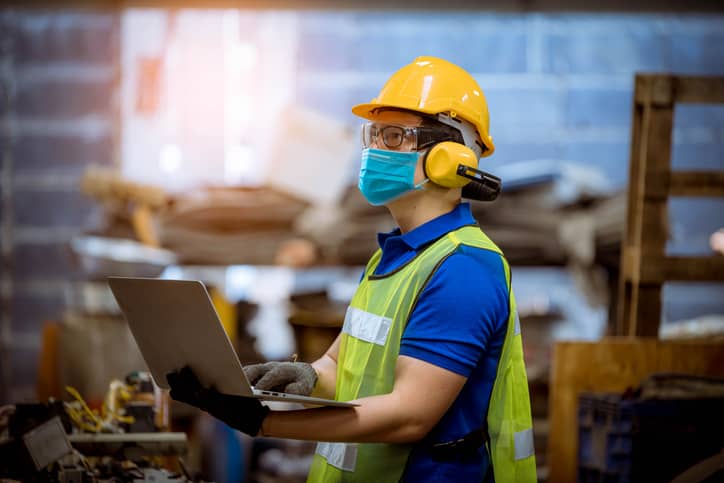When it comes to workplace safety, there are measures in place that have been created to keep employees safe, and ensure that their atmosphere is secure and healthy. To maintain these expectations, workplaces are required to have safety inspections conducted, to follow up with their protocols, and make sure that safety is their top priority.
Protecting the health and safety of employees is a priority for any business. To do this, there needs to be a thorough inspection of their working environment so that any potential risks can be identified and minimized. An occupational health and safety (OHS) inspection is a comprehensive review of the workplace to ensure it meets safety standards and regulations. (Note, that the health and safety organization may go by another name and have different guidelines depending on where on the globe you reside!)
If you work in an industrial environment, it’s especially important to have frequent OHS inspections, so that your workplace can stay up to date with the most recent requirements and protocols. So, if you’re expecting an OHS at your workplace, and want to know more about what that might look like, we’re going to break down what OHS inspectors are looking for.
Workplace Hazards
The most important part of an OHS inspection is identifying any workplace hazards that could potentially harm workers. These hazards can range from physical dangers such as chemicals and machinery, to psychological issues such as stress and noise levels. It’s important for OHS inspectors to consider all potential sources of danger to create a safe working environment for everyone.
By ensuring that all physical and psychological hazards have their own system of protocols and are kept up to date and monitored by employees, a workplace can remain risk-free at all times. If these measures are not yet in place, an OHS inspector will make professional recommendations and follow up on these procedures, to ensure that all safety expectations are meeting OHS requirements.
Protective Equipment
Another key component of an OHS inspection is ensuring that the right protective equipment is being provided to employees to minimize risk. This includes things like hard hats, gloves, eye protection, respiratory masks, etc., depending on what type of work is being performed in the workplace. The inspector will also check if these items are up to date with current regulations and standards and if they are being used correctly by workers during their duties.
Employee protective equipment, also known as personal protective equipment (PPE) is vital to the health and safety of each individual. Part of ensuring a safe workplace is to keep your PPE clean and functional, so that you can reduce the risk of injury or harm. An OHS inspection will inform you whether your PPE is adequate, and make recommendations if the company PPE needs replacing or updating.
Training Requirements
Finally, an OHS inspector will review employee training requirements as part of the inspection process. They want to make sure that employees are properly trained on how to safely use any tools or equipment they may encounter while at work. This includes both general safety training as well as specific training related to their job duties or tasks they may be required to perform on a regular basis. The goal here is for employers to provide enough information about safety protocols so that employees know how best to protect themselves from harm in the workplace.
Ensuring that every employee understands the training protocols, mechanisms of each piece of equipment, and the safety measures that are expected when using certain tools will foster a sense of security within the workplace. If expectations are not yet in place, an OHS inspection can help you develop safety protocols for future training.
Conclusion
Occupational health and safety inspections are essential for ensuring a safe working environment for all employees. Keep in mind that industrial work environments are especially important, since they pose the biggest risks to their employees if not kept clean, secure, and safe.
When it comes to OHS inspections, auditors look out for potential hazards such as physical danger or psychological issues that could have an impact on worker wellbeing. They also ensure that protective equipment such as hard hats and gloves are up to date with current standards and regulations and that workers receive adequate training on how best protect themselves while at work. Taking these steps can help reduce risks associated with injury or illness in the workplace, making it safer for everyone involved!

